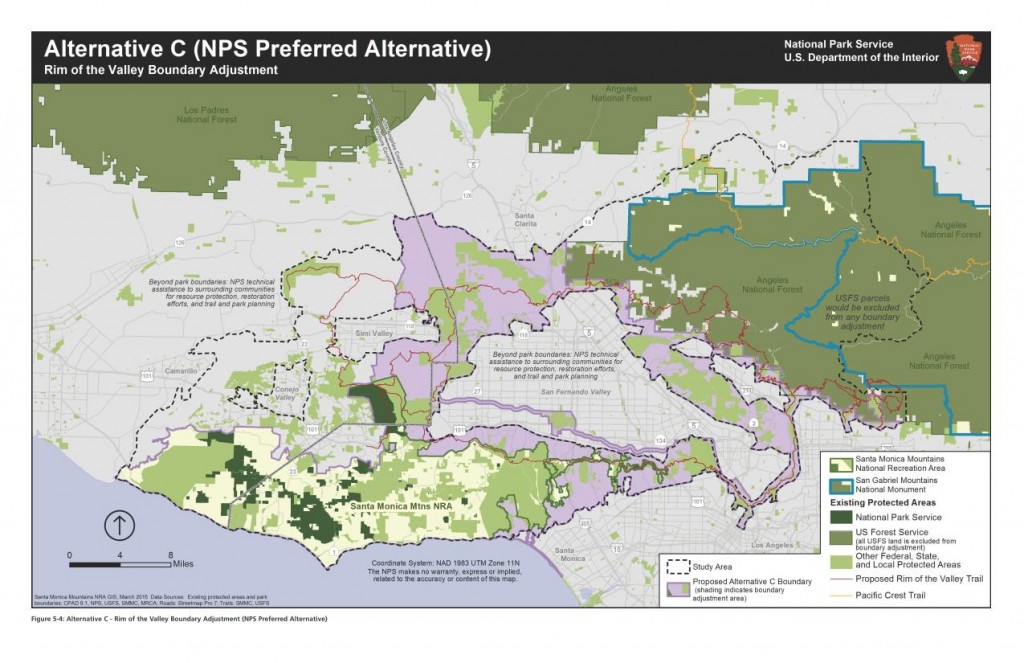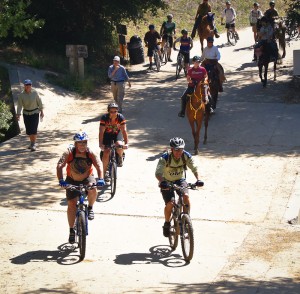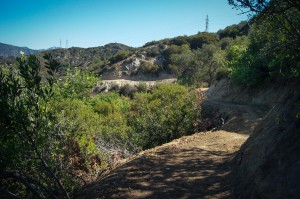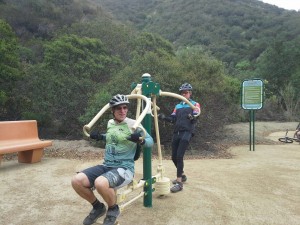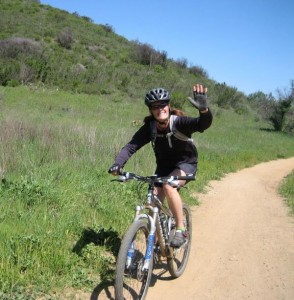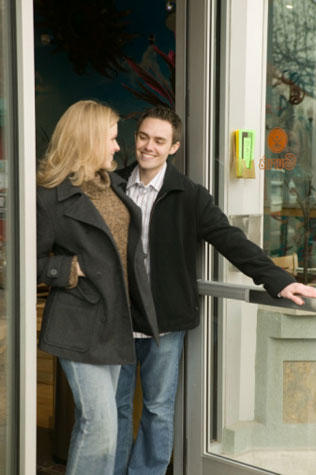The National Park Service (NPS) today released the findings of the Rim of the Valley (ROTV) study, including a draft Environmental Impact Report and Proposed Alternatives. The study has been underway since 2010. CORBA has commented on previous phases of the study and has also encouraged our members and the mountain biking community to do so.
The NPS has developed five alternatives for the public to comment upon. Their preferred alternative expands the boundary of the Santa Monica Mountains National Recreation Area (SMMNRA) to include much of the study area, which would allow the NPS to provide technical assistance to other land managers within the NRA. Other alternatives include a “no action” alternative, meaning that nothing will change, a Conservation Partnership alternative, and a boundary expansion plus conservation partnership alternative. A fifth alternative, which would have only provided planning assistance for a Rim of the Valley trail, was rejected as it didn’t meet the objectives of the study.
None of the proposed alternatives would affect or include any Angeles National Forest or San Gabriel Mountains National Monument, which would remain under the management of the Forest Service. All alternatives (except the “no action” alternative) include the conceptual Rim of the Valley Trail, as originally envisioned by Marge Feinberg in her 1976 Masters thesis.
CORBA will be analyzing the study’s findings and will report back. Comments must be submitted before June 30, 2015. An executive summary can be found here. The comprehensive set of related documents and maps, and a comment submission form can be found on the NPS Park Planning web site, while a more user-friendly overview of the process can be found at http://www.nps.gov/pwro/rimofthevalley/index.htm
The NPS is hosting six public meetings between April 21, 2015 and June 2, 2015 to discuss the findings and alternatives presented in the draft study report. We invite and encourage all CORBA members and supporters to attend one of the public meetings. For those unable to attend, we’ll post a full report after the first meeting.
Online/Virtual Public Meeting:
Tuesday, April 21, 2015 12:30 p.m.(PDT)/ 3:30 p.m.(EDT) (WebEx Connect Time)
Please check-in early as there could be some software downloads that you may need to install to participate. The meeting presentation will start promptly at 1:00 pm PDT/4:00 pm EDT.
Click here for instructions on how to participate in the online meeting.
Local Public Meetings Schedule:
Monday, May 4, 2015, 7–9 pm
La Crescenta Public Library, Community Room
2809 Foothill Blvd.
La Crescenta, CA 91214
Tuesday, May 5, 2015, 7–9 pm
William S. Hart Regional Park, Hart Hall
24151 Newhall Avenue
Newhall, CA 91321
Wednesday, May 6,2015, 7–9 pm
Conejo Recreation and Parks District
Community Room
403 West Hillcrest Dr.
Thousand Oaks, CA 91360
Thursday, May 21, 2015, 7–9 pm
Mason Recreation Center
10500 Mason Ave.
Chatsworth, CA 91311
Tuesday, June 2, 2015, 3-5 pm*
El Pueblo de Los Angeles
Hellman-Quon Building
130 Paseo de la Plaza
Los Angeles CA 90012


